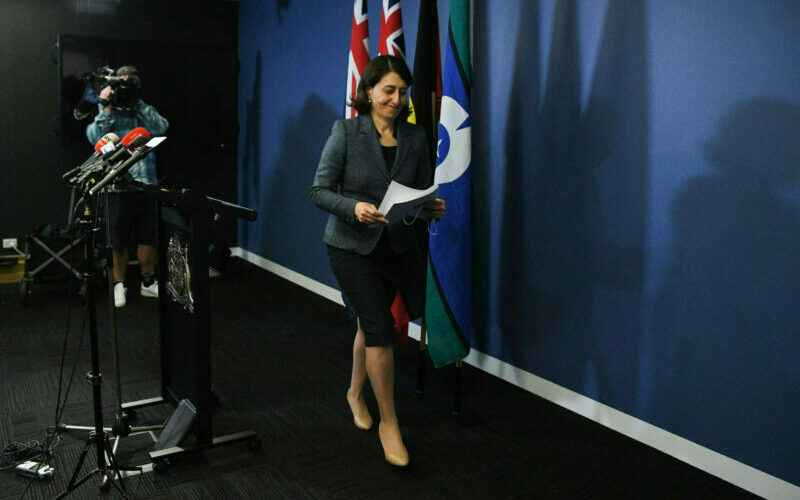
The Coalition must be relieved that the swings were not as high as some of the recent punishing rebukes administered to long-term governments.
The four NSW byelections held on Saturday were something of a mini-election, being spread across widely different areas of the state.
They were in seats ranging from safe to marginal and involved all the major parties. Willoughby was a safe Liberal seat (requiring a swing of 21 per cent to be lost) on Sydney’s lower north shore formerly held by ex-premier Gladys Berejiklian. Monaro, formerly held by former Nationals Leader John Barilaro, is based on Queanbeyan and was reasonably safe (12 per cent). Bega, where Liberal Andrew Constance resigned to contest the local federal electorate, is on the south coast and was more marginal (7 per cent). Strathfield, where former ALP leader Jodi McKay unexpectedly resigned, is an ethnically diverse electorate in Sydney’s west, and was the most marginal (5 per cent).
The results were mixed. The government lost Bega with a swing to Labor of about 14 per cent. Local factors seem to have been at work: the loss of the sitting MP’s personal vote; discontent over the government’s response to the 2019 bushfire devastation; an exceptionally good ALP candidate, local medical specialist Michael Holland.
The Liberal Party looks set to retain Willoughby, although with a swing to Independent Larissa Penn of 18 per cent. Labor did not field a candidate. Again local factors were at play. A swing was inevitable as Berejiklian was a hard-working and popular MP. Liberal Party factionalism compounded the damage.
The long-time heir apparent was Willoughby Mayor, Gail Giles-Gidney, a Liberal moderate backed by Berejiklian. In a surprise outcome, Tim James from the right narrowly won the preselection ballot. Giles-Gidney was a popular, long-serving Mayor who would have damped down the swing.
The Nationals held Monaro easily. The swing against them was about 7 per cent, not unexpected in a byelection that saw the departure of a high-profile MP.
Strathfield stood against the trend with, it seems, a small swing to the government. The loss of McKay’s personal vote may have been a factor but the ALP had an outstanding candidate in Jason Yat-Sen Li. Strathfield is the sort of electorate in which the 2023 NSW election will be won or lost.
What of the overall significance? The widely differing nature of the contests and the general inaccuracy of byelections as a predictor of general election results make it hard to generalise. However, a trend that has become apparent in recent decades is increasingly large swings against long-term governments.
At a group of byelections in October 2008, the Liberal Party won Ryde from Labor with a two-party preferred swing of 23 per cent. Although the ALP retained Cabramatta, the swing to the Liberals was 22 per cent. Labor held Lakemba but suffered a swing of 13 per cent. At the Penrith byelection on June 19, 2010, the record set in Ryde was broken with a two-party preferred swing against the Labor government of 26 per cent.
In November 2016, the Nationals lost the previously safe seat of Orange to the Shooters, Farmers and Fishers with an after-preferences swing of 22 per cent. Berejiklian had her baptism of fire as Premier with byelections in April 2017 in the safe Liberal seats of Manly and North Shore. Although the government retained both, the swings against it were 14 per cent and 17 per cent respectively.
There has been some loose media speculation that the byelection results were a “huge disappointment” for the Coalition. However, on balance, the government must be quietly relieved that the swings were not on the scale of those mentioned above, an outcome that was distinctly possible if the voters were thoroughly disenchanted.
The results were inevitably seen as a referendum on two new and relatively untried leaders: Premier Dominic Perrottet, who succeeded the popular Berejiklian on October 5, 2021, and Opposition Leader Chris Minns who succeeded the unpopular McKay on June 4, 2021. Both can take some comfort from Saturday’s results.
Minns has claimed a scalp, cementing his hold on the leadership and raising his visibility and credibility as alternative premier. He has weakened the government’s hold on power. It will now have 45 of the 93 MPs in the Legislative Assembly, increasing its dependency on crossbenchers and Independents.
Perrottet is attempting to establish himself as Premier in the eyes of the electorate, a difficult task given the popularity of his predecessor. He is the fourth Liberal Premier since Barry O’Farrell won the 2011 election.
The transition to a new leader is always a risky time for a long-term government. There are plenty of examples in NSW of short-term leaders who lost the next election: Mair after Stevens in 1941, Renshaw in 1965 after 24 years of ALP government, Willis in 1976 after 11 years of Liberal rule, Fahey in 1995 after Greiner, Keneally in 2011 ending the Carr era. Given all this, Perrottet would be heartened that the result was not worse. It is a tentative sign that his transition to office has gone reasonably smoothly.
Dr David Clune OAM was for many years the manager of the NSW Parliament’s Research Service and the Parliament’s Historian. He is currently an Honorary Associate in the Department of Government and International Relations at the University of Sydney and Consultant Historian to the NSW Legislative Council History Project. Dr Clune has written extensively about NSW politics and history, including most recently short biographies of Neville Wran and Sir William McKell (Connor Court).



